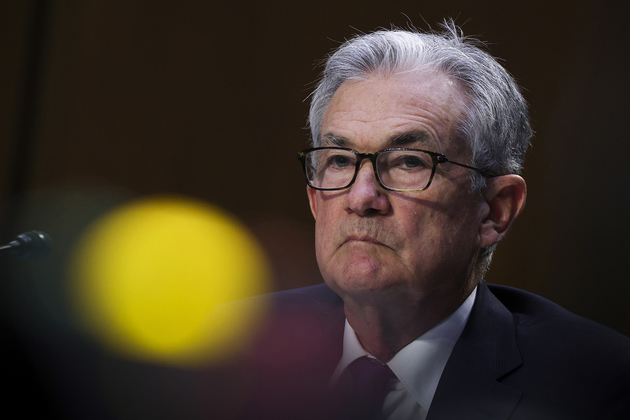
Photo/VCG
At 2 a.m. Beijing time on December 14, the Federal Open Market Committee (FOMC) of the U.S. Federal Reserve kept the federal funds rate unchanged at 5.25%-5.5% for the third consecutive time, in line with market expectations.
At the subsequent press conference, Fed Chairman Powell stated explicitly that the Fed had reached the end of its rate hike cycle and had started discussions on rate cuts.
“The Fed gave the market an early Christmas gift.” Kellie Wood, deputy head of fixed income at Schroders Plc in Sydney, said. After Powell’s remarks were released, the three major U.S. stock indexes surged, with the Dow hitting a record high intraday; gold soared more than 2%, regaining the $2,000/ounce mark. Meanwhile, the FOMC’s dovish turn caused the dollar index to fall below 103, and non-U.S. currencies rose across the board; the 10-year U.S. Treasury yield briefly fell below the 4% psychological level…
The “dot plot” showed that among the 19 officials who provided interest rate forecasts. Among them, 16 expected the rate to fall below 5.0% next year, five expected the rate to be between 4.75%-5.0%, equivalent to two rate cuts next year based on an estimate of 25 basis points per cut; six expected the rate to be between 4.50%-4.75%, equivalent to three rate cuts; four expected the rate to be between 4.25%-4.50%, equivalent to four rate cuts; and even one expected the rate to be between 3.75%-4.0%, equivalent to six rate cuts.
Brian Coulton, chief economist at Fitch Ratings, said in an email to NBD, that“The Fed acknowledged in its policy statement that ‘inflation has eased over the past year’ and will its federal funds rate forecast for the end of 2024 by 50 basis points, sending a strong signal that the Fed believes the rate has peaked. However, despite the easing of tightening tendencies, they still exist, indicating that the Fed remains concerned about the stickiness of service and wage inflation and the tight labor market conditions. We believe that the federal funds rate will reach 4.75% (upper limit) by the end of next year, significantly higher than market expectations.”
Looking ahead, Suki Cooper, executive director of precious metals research at Standard Chartered Bank, said in an interview with NBD that the Fed’s shift from its “long-term high-interest rate” expectation two months ago to this week’s dovish turn created a favorable backdrop for gold, and that gold had resumed its upward momentum from macro factors.


 川公网安备 51019002001991号
川公网安备 51019002001991号





